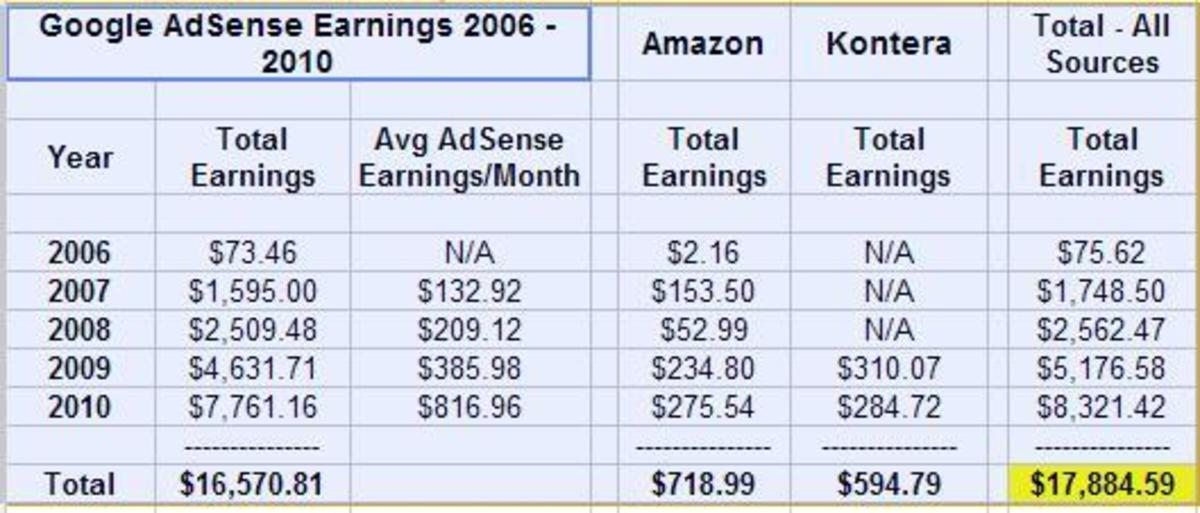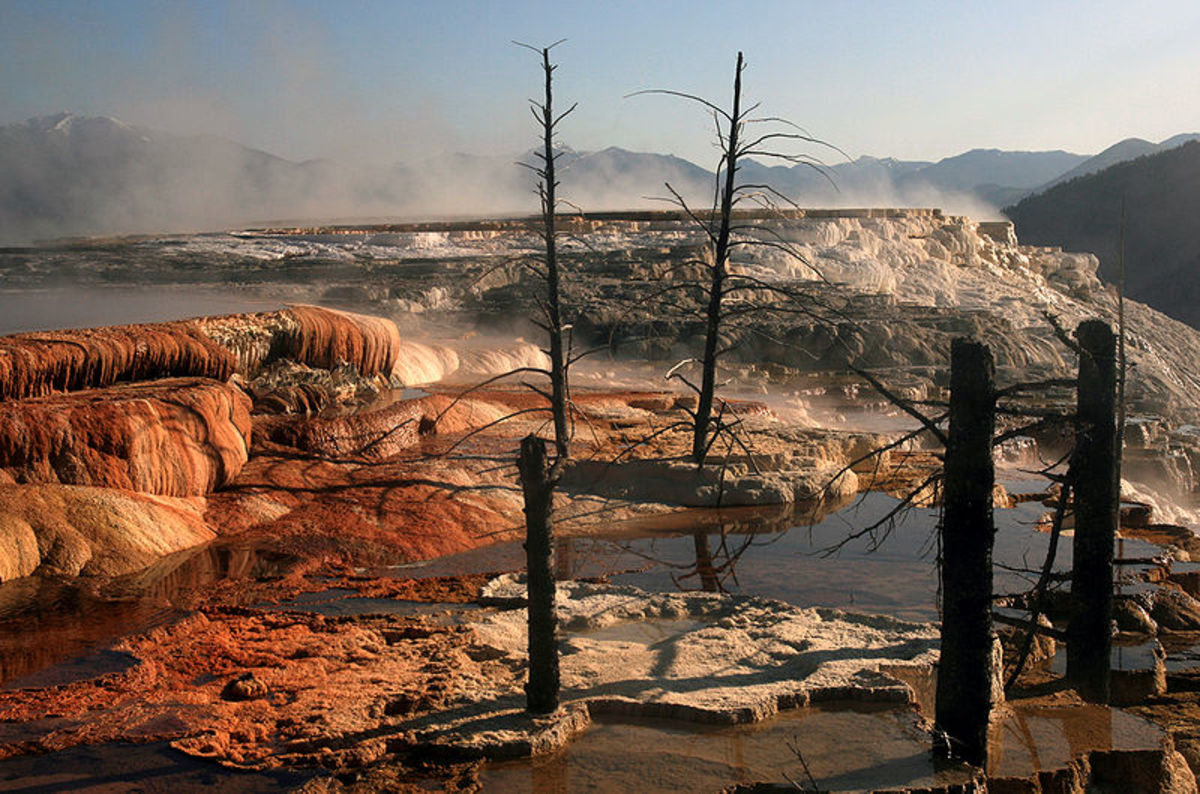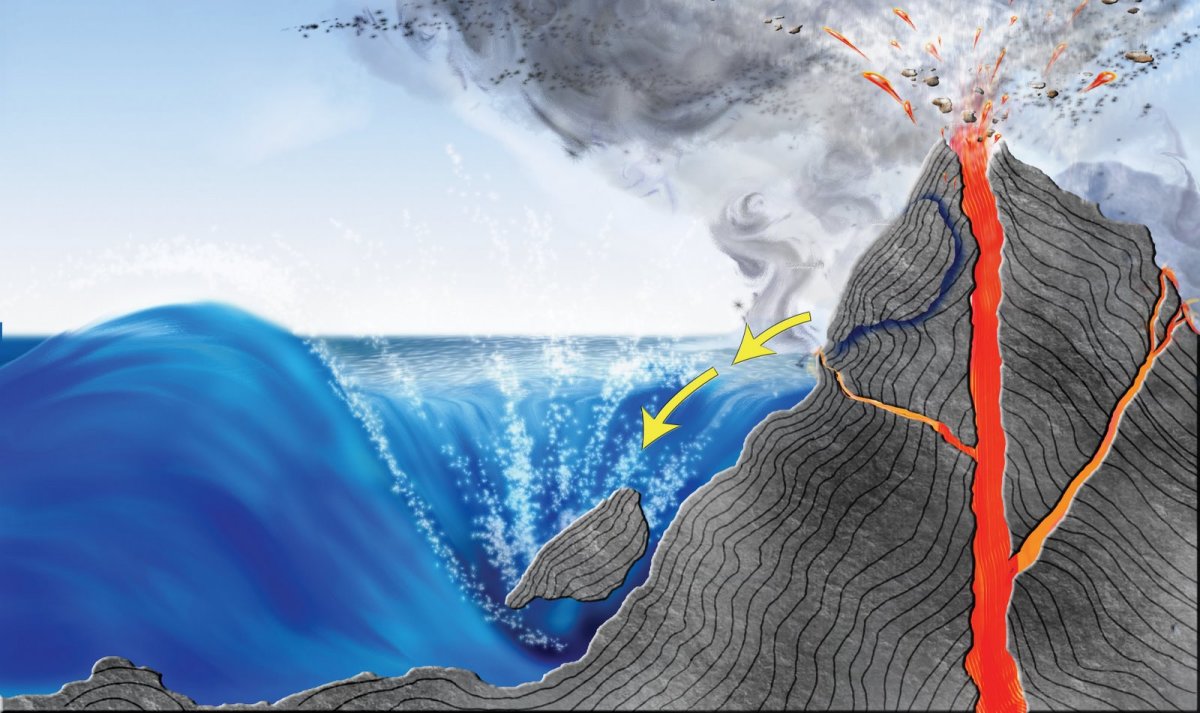2017 Seismic Review-Forecast (1st Quarter)
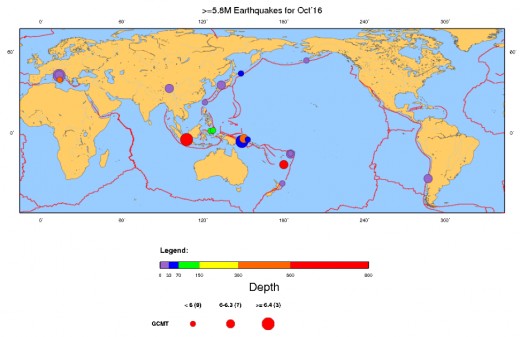
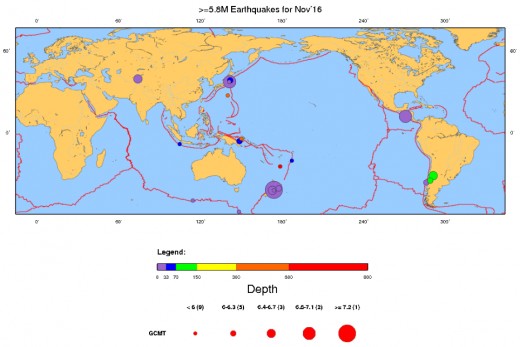

A Seismic Look at the Last 3 Months
Three months ago I wrote a forecast hub for the last 3 months of 2016. I expected things seismically to pick up speed in that quarter compared to the one before. October was projected to be a bit more active than average for significant events of 6.8 magnitude or larger. As it turned out, there were no such quakes that month and activity was average for earthquakes smaller than that. So it was more than a bit below average instead. However, the next month was a bit above average and the month after that was more active still.
As a matter of fact, beginning on 13 November 2016 (with a 7.8 magnitude temblor in New Zealand; exactly 4 years after a total solar eclipse that cast its shadow just north of New Zealand) and continuing till December 25 2016 (with a 7.55 magnitude aftershock of the 22 May 1960 Chile earthquake of 9.5 magnitude), there were three seismic events of at least 7.8 magnitude and one of either 7.5 or 7.6 in magnitude. If one looks at just the 7.8 and 7.9 magnitude quakes (that last one the largest quake of 2016) of the 8th and 17th of December (in the Solomon Islands and the New Britain region of Papua New Guinea; both not far from an annular solar eclipse path that went through the area 3.6 years before), they represented a frequency more than 30 times what the average occurrence is for quakes of at least 7.8M (2.5 of them per year is the average or one every 147 days). If one looks at the last 3 quakes, starting with the 7.8M on 8 December and ending with the 7.55M on Christmas day, they occurred 12 times more frequently than normal (for the 17 day period).
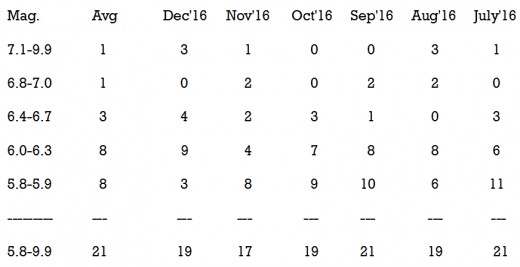
So there was a bit of a worldwide earthquake storm from mid November to about a week before the end of December or for 42 days. At this point though it appears that the show is over. There have been only two shocks of 5.9 and 6.2 magnitude (representing half the normal frequency) during the week following the 7.55 magnitude Christmas quake.
The death toll ironically was largest for quakes that were smaller than the four that occurred with a magnitude of at least 7.55. There was a total of three deaths from the two 7.8 magnitude quakes and no deaths from the 7.9 and 7.55 magnitude events. The largest death toll, with 103 casualties, came from a 6.4 magnitude shock in northern Sumatra on 6 December 2016. The difference being that this last shock was very shallow and very close to a populated area. The largest four events, although quakes of that size are capable of producing dangerous tsunamis, did not generate any damaging seismic ocean waves.
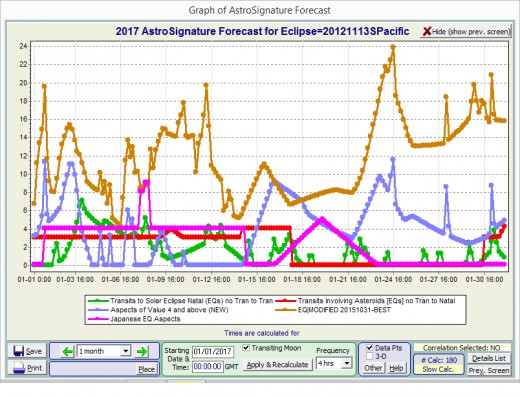
Seismic Forecast for the Next 3 Months
The next three months is expected to be similar to the last three months in that it should end with a greater frequency of significant events than it starts off with. We still seem to be in a mostly average period of seismic activity. However, unlike 2016, it is my belief that, beginning as early as 11 March 2017, a more active period will result and last for at least 2-3 months. During this period or later in the year, it is expected that there will be an earthquake of at least 8.0 magnitude (something that did not happen in 2016). There is also a good likelihood that 2017 will produce at least two quakes of 8.0 magnitude or greater.
The most likely dates in January 2017 would be the 3rd & 4th, the 12th, the 24th, and the last two days of the month; especially in the eastern Indonesia to north of New Zealand areas. The seismic windows for this month will occupy less than 20% of the month of January 2017.
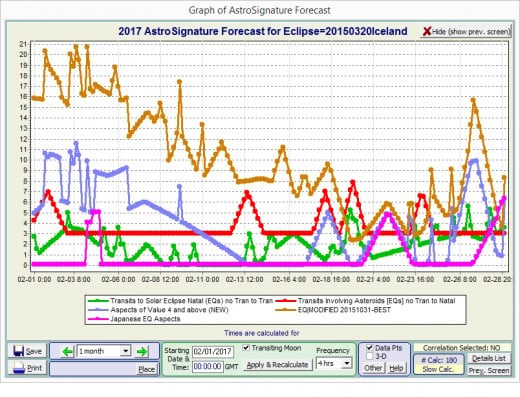
The first week of February 2017 is likely to be a bit busy, especially from the 2nd through the 6th. Also likely is activity during the 18th through the 20th of the month, followed by a potential two days on the 26th and 27th of the month. Picking a location for this month is nearly impossible if you base it on the eclipse that seems to fit the period best. The reason for that is because the eclipse ended at the North Pole. When that happens all longitudes are possible locations of a significant earthquake's epicenter, but perhaps more likely in the northern than in the southern hemisphere. Also perhaps more likely in Asia or Europe as well. The seismic windows for this month will occupy 36% of the month of February 2017.
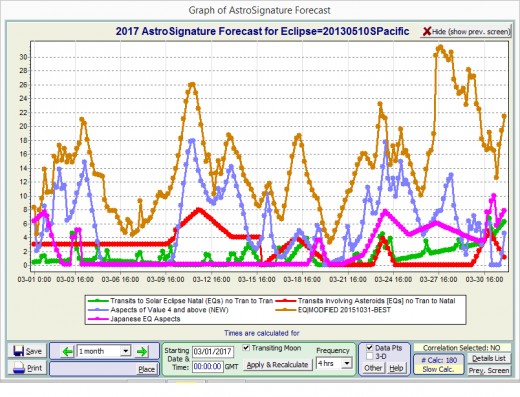
Similar to February, March may be busy during the 1st through the 5th, and again (but more likely) during the 10th through the 14th. There is a strong possibility that the 18th will be active. The most active period should be from the 22nd through the 25th, but the 27th through the end of the month may rival it.
The Seismic windows (derived from peaks in Astro-Aspect Values) for this month occupies 61% of the month of March 2017. I am expecting at least two events of 6.8 magnitude or greater. In other words it should be at least average, but it is expected that it will be at least 50% above the average frequency (or at least three rather than the usual two per month).
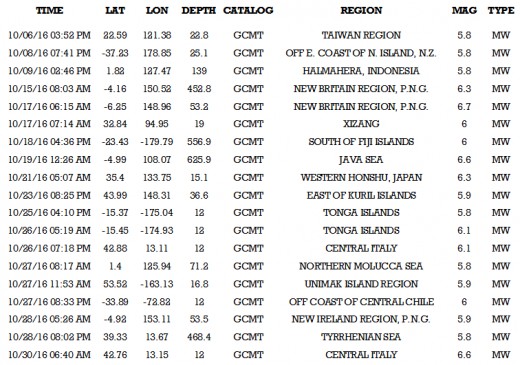
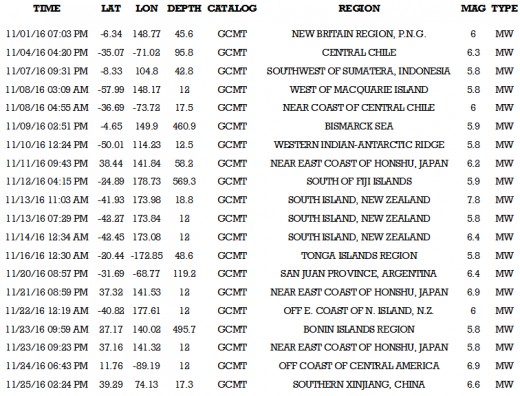
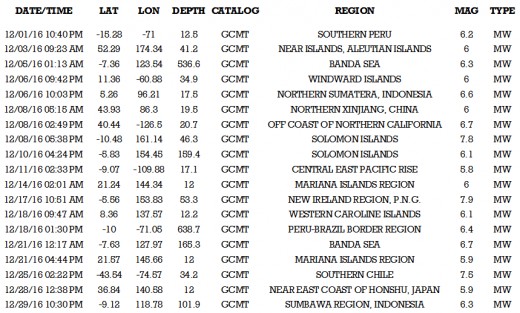
© 2017 Joseph Ritrovato





